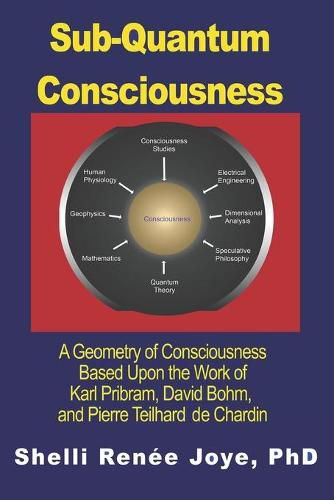Readings Newsletter
Become a Readings Member to make your shopping experience even easier.
Sign in or sign up for free!
You’re not far away from qualifying for FREE standard shipping within Australia
You’ve qualified for FREE standard shipping within Australia
The cart is loading…






A holoflux theory of consciousness as energy is hypothesized and shown to support both local and non-local properties. This thesis emerges from an integral evaluation of evidence drawn from three sources: (1) the holonomic mind/brain theories of Karl Pribram, (2) the ontological interpretation of quantum theory by David Bohm, and (3) the hyperphysics of consciousness developed by Pierre Teilhard de Chardin. Applying an integral methodology to superimpose and correlate seemingly disparate concepts from among these sources and others, a composite theory emerges, a holoflux theory of consciousness, after the term favored by Karl Pribram to describe David Bohm’s holomovement. This Pribram-Bohm composite holoflux theory is shown to be congruent with established principles of physics, mathematics, and electrical engineering, as well as with what Pierre Teilhard de Chardin termed hyperphysics. Extending the panpsychist paradigm that consciousness is inherent in the structure of the universe, the thesis describes a dynamic energy process bridging the explicate space-time domain with a transcendent flux domain located at the spatial center, everywhere. This center is hypothesized to be synonymous with three key concepts: Karl Pribram’s flux domain, David Bohm’s implicate order, and Pierre Teilhard de Chardin’s point Omega. Commonly held arguments, both philosophical and technical, dismissive of energy fields as a possible substrate of consciousness, are examined and refuted. Major theories of consciousness developed by Pribram, Bohm, and Teilhard de Chardin are examined in detail, and presented in the context of their life experiences. Extending their theories, the holoflux theory of consciousness views reality as one energy, cycling mathematically, lens-like, in a process of transformation manifesting in three modes: (1) electromagnetic energy in space-time, (2) holoflux energy in a transcendent order, and (3) vibrating isospheres at the boundary gap separating the implicate from the explicate orders.Pierre Teilhard de Chardin’s more technical concepts (f, centro-complexity, radial energy, tangential energy, complexity-consciousness, noogenesis, centrology, and Omega) are evaluated in detail, and interpreted within the framework of holoflux theory, to provide new insights into his hyperphysics of centro-complexity. The plausibility of this holoflux theory is examined through identification of correlations between physiological, electromagnetic, and geophysical measurements.
$9.00 standard shipping within Australia
FREE standard shipping within Australia for orders over $100.00
Express & International shipping calculated at checkout
A holoflux theory of consciousness as energy is hypothesized and shown to support both local and non-local properties. This thesis emerges from an integral evaluation of evidence drawn from three sources: (1) the holonomic mind/brain theories of Karl Pribram, (2) the ontological interpretation of quantum theory by David Bohm, and (3) the hyperphysics of consciousness developed by Pierre Teilhard de Chardin. Applying an integral methodology to superimpose and correlate seemingly disparate concepts from among these sources and others, a composite theory emerges, a holoflux theory of consciousness, after the term favored by Karl Pribram to describe David Bohm’s holomovement. This Pribram-Bohm composite holoflux theory is shown to be congruent with established principles of physics, mathematics, and electrical engineering, as well as with what Pierre Teilhard de Chardin termed hyperphysics. Extending the panpsychist paradigm that consciousness is inherent in the structure of the universe, the thesis describes a dynamic energy process bridging the explicate space-time domain with a transcendent flux domain located at the spatial center, everywhere. This center is hypothesized to be synonymous with three key concepts: Karl Pribram’s flux domain, David Bohm’s implicate order, and Pierre Teilhard de Chardin’s point Omega. Commonly held arguments, both philosophical and technical, dismissive of energy fields as a possible substrate of consciousness, are examined and refuted. Major theories of consciousness developed by Pribram, Bohm, and Teilhard de Chardin are examined in detail, and presented in the context of their life experiences. Extending their theories, the holoflux theory of consciousness views reality as one energy, cycling mathematically, lens-like, in a process of transformation manifesting in three modes: (1) electromagnetic energy in space-time, (2) holoflux energy in a transcendent order, and (3) vibrating isospheres at the boundary gap separating the implicate from the explicate orders.Pierre Teilhard de Chardin’s more technical concepts (f, centro-complexity, radial energy, tangential energy, complexity-consciousness, noogenesis, centrology, and Omega) are evaluated in detail, and interpreted within the framework of holoflux theory, to provide new insights into his hyperphysics of centro-complexity. The plausibility of this holoflux theory is examined through identification of correlations between physiological, electromagnetic, and geophysical measurements.